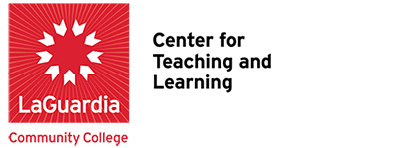
It Wasn’t Just a Pandemic: Reflections – Segment 1
Overview | Segment 1 video | Segment 2 Reflections | Segment 3 Reflections
In “It Wasn’t Just a Pandemic,” our colleagues, razor-sharp despite visible fatigue, look toward an unpredictable fall semester and identify the human energy and technological resources required to responsibly adapt new modalities of teaching and learning to disciplinary content and pedagogy. Their conversation, recorded on Zoom, edited for length and segmented into four parts of approximately twenty-minutes each, concludes with remarks by President Adams. Written reflections by participants are featured on each Segment page.
Significant Observations, Changes, and the Future
Santo Trapani, Business and Technology
One significant observation I’ve made this past year is that while online teaching allowed us to continue to function as an institution, distance teaching has heightened my awareness of the fragmented world of online teaching and learning. By “fragmented,” I mean the infinite number of tools and technologies deployed, the varieties of pedagogy, differences in levels of remote teaching and learning experiences, and the diverse challenges to and impact upon the student experience.
While there are many beneficial applications for online teaching and learning, I believe we must come together and create a uniform platform with stringent policies focusing on different populations within the community college (adult learners, ESL students, etc.). Online platforms can help us extend our reach beyond the local community, possibly helping us to create AAS or certificate programs that meet the needs of working adults who want to practice and learn new skills.
What I will leave behind are ZOOM classes and meetings that do not require that students enable their cameras. While I understand the policy that “cameras on” are not required, I did not agree with it. Conducting a class to a ZOOM screen of twenty-five students while only two or three were “on camera” was quite uninspiring.
What I will take forward from this year is RESILIENCE and the knowledge that, in the midst of a pandemic, we can accomplish our goals. The pandemic forced all of us—faculty, staff, and students—to transition to online platforms in a very short period of time. And yet, in a far from perfect world, we still achieved our goals. Faculty and students alike dealt with personal anxiety about the virus, the loss of loved ones and friends, confinement at home and lack of face-to-face social interaction, and we didn’t collapse. We prevailed.
On fluctuations in online learning experiences
Nathan Hosannah, Mathematics, Computers, and Engineering
One of the things that I’ve observed this last year was the remarkable change from student disconnection with online learning to improved connection and efficiency, which is now trending towards a decreased student interest in online learning. It reminds me of distance running.
I don’t think that there is anything I will leave behind. All of the lessons have been necessary, and have shown the importance of adaptation, sometimes with little warning. I will absolutely keep some of the online simulations that I introduced to my courses as I find that they help students with programming and analysis.
On flexibility and inequity
Ryan Mann-Hamilton, Social Science
Regarding our classes and expectations of students and the institution, flexibility has been the key to the year. Many students are dealing with inadequate technology, unequal access to internet, and language barriers, which have made the year quite challenging. I have implemented mid-semester check-in sessions with my students and I will continue to do so beyond the pandemic.
On perseverance
Faith Armstrong, Health Sciences
Permanence, perseverance and persistence in spite of all obstacles, discouragements, and impossibilities: It is this, that in all things distinguishes the strong soul from the weak. – Thomas Carlyle
I always tell my students to PUSH and persevere until success happens!
The pandemic altered my teaching style in several ways, such as limiting f2f interactions. F2F is my top priority, especially in my Fundamentals of Nursing class, so teaching students the basics in nursing via Zoom was a difficult transition. Personally, I do not like using power points, sharing screens, or not seeing all my students. My challenge is whether my students are engaged or grasping the content. Another struggle: our students have clinicals via Zoom, which puts them at a disadvantage.
I was faced with students’ unreliable internet access or none at all, living in small spaces, families, illness, not being tech savvy, and just not prepared to face the online world. My concern was about making the transition better for my students. How could I achieve it? I decided to ask students questions at the beginning of lecture/lab and get their feedback. I met students via Zoom to listen to their stories and situations, and see what I could do differently to make this online transition work. I met with students eight to ten hours a day, even on holidays. However, I felt lost, overwhelmed, and fatigued.
As faculty, we need to be present and flexible for our students, but we also must take a breath and regroup. I agree with Tara (Coleman) about boundaries, and Michele (Mills) about faculty support. Both are needed.



